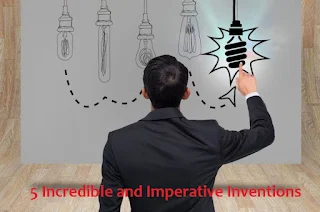Odd & Ugly Scars
When anybody faces an accident, after healing he faces scars on his or her body. Particularly the face scars give an odd look. It is because the skin on the sides of the wound starts to pull apart, and the support by fibrous joints is no longer there.
As a result the scars formed around the wound due to the tissues. Nobody wants these scars due to oddness and ugliness.
The problem has been overcome by the researchers of Stanford University. They developed a new type of dressing that didn’t allow the wounds to stress mechanically. This nasty element formed the scars.
The researchers which produced this dressing are made of a thin layer of elastic silicone which is pressed over the wound after the removal of fibrous joints. The magical plastic layer begins to contract evenly within proper time and presses the edges of the wound all together. The plastic layer didn’t allow the edges to pull apart. Thus there appears no scar.
Controlling of Temperature After Blood Loss
The soldiers took part in a battle and sacrificed for their country, give their life due to the loss of blood. In medical terminology it is called “Hypothermia”, in this condition the temperature of the body falls low and due to the loss of blood they face death.
The students of New Jersey Institute are trying to develop a new kind of device which will help soldiers who fought in battle fields. The device can prevent the happening of hypothermia by heating the blood artificially till medical aid could provide. At this time by this device researchers are raising body temperature after blood loss. The condition of the injured person becomes stable after 16 hours to raise the temperature to a required level.
This device could work in a shorter period of only 4 hours and pass warm air to the lungs of the injured person. When the blood supply passes from the lungs, the body temperature rises to safe levels.
Bacteria Producing Electricity
Surely he did magic to produce electricity from bacteria. He was a professor of botany in the University of Durham in the UK for a century. The basis of this magic is biological fuel cells which have been investigated for production of electricity.
The professor’s work was developed by a Japanese scientist in 1976. Microbial fuel cells have an anode and a cathode chamber, while the electricity is produced by eating away organic matter.
How the electricity is produced is still not understood. But a team of scientists at the University of Anglia discovered the real structure of bacterial proteins which produce the electrical current.
This structure is designed by nature that alleviate the apparent motion of electrons from the inner portion of the bacterial cell to the outside atmosphere, hence causing the electrical current.
Take a Hover Bike for Flying
You know very well that people cross the English Channel daily by hovercrafts.
These ships fly only two feet above the surface of water. Keeping in mind the same idea Australian craftsman Chris Malloy has developed a motorcycle and named it Hover bike that will fly several thousand feet above the ground.
The hover bike is designed in such a way that it can fly with a speed of 173 miles/ hour when flying in the air. This hover bike is made of carbon fiber and has 2 ducted spinning propellers. It is expected that we will be flying in this hover bike, because its first flight is taking place by August of this year.
Paper Fabrics
An interesting and incredible fabric has been introduced in the market which is paper fabrics. By this product mobile telephones and electrical devices may be made by paper. The scientists of Carolina University found it possible to deposit conductive nano coatings on paper.
You will be surprised to know that all kinds of such material can be used in electronic devices. The coatings are thousands of times thinner than a human hair, and are made up of inorganic materials. They can be coated on paper, cotton and on polypropylene materials that are usually used for making daily used bags.

